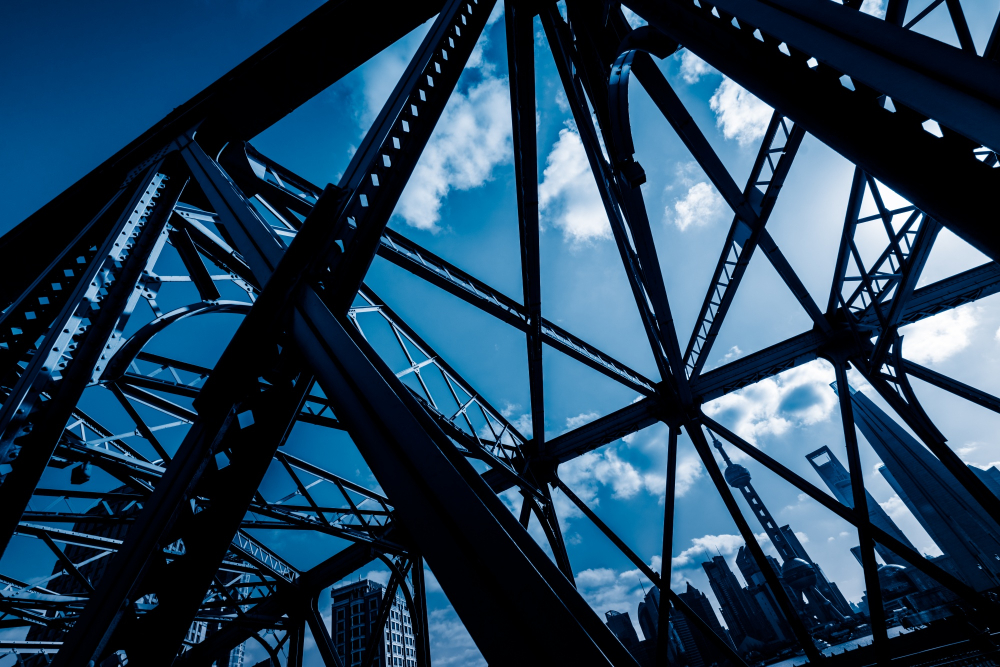In the world of commercial construction, the term “industrial structure” often comes up when discussing large-scale buildings designed for business operations. But what exactly is an industrial structure, and what makes it different from other commercial buildings? As a leading contractor in the industry, GC44 specializes in designing and constructing industrial structures tailored to the unique needs of each business. Let’s explore what industrial structures are, their key components, and why they are crucial for various industries.
Understanding Industrial Structure
An industrial structure is a building or facility primarily used for manufacturing, processing, warehousing, or distribution activities. Unlike typical office or retail spaces, industrial structures are designed to accommodate heavy machinery, large equipment, storage, and high levels of operational activity. These buildings include factories, warehouses, distribution centers, power plants, and storage facilities.
Industrial structures require careful planning and specialized design to meet industry-specific requirements. For example, a food processing plant will have vastly different needs compared to a distribution warehouse. At GC44, we understand that each project demands a tailored approach to create a space that maximizes productivity, safety, and efficiency.
Types of Industrial Structures
Industrial buildings come in various forms, depending on their intended use. Here are some common types:
- Manufacturing Plants:
Designed to house machinery and equipment for producing goods. They often include sections for assembly lines, storage, quality control, and packaging. Manufacturing plants typically require features like reinforced flooring, heavy-duty ventilation, and specific safety installations to handle production processes efficiently. - Warehouses:
Large, open spaces used for storing goods and materials. Warehouses are designed to accommodate high racks, forklifts, and loading docks for easy movement of inventory. GC44’s expertise in warehouse design ensures that the space is optimized for both storage capacity and operational flow. - Distribution Centers:
Similar to warehouses, but focused on the logistics of moving products efficiently. These buildings often include automated conveyor systems, loading docks, and office spaces for administrative operations. - Cold Storage Facilities:
Specialized warehouses equipped with refrigeration and insulation to store perishable goods like food and pharmaceuticals. The design of cold storage facilities requires advanced temperature control systems, insulation, and ventilation to maintain product quality. - Workshops and Fabrication Units:
Smaller industrial spaces tailored for fabrication, repair, and assembly work. These structures often include workbenches, tool storage, and machinery areas, designed to support various crafts and manufacturing tasks.
Key Components of Industrial Structures
Industrial buildings have unique features and components that distinguish them from other commercial spaces. Here are some of the critical elements of industrial structures:
1. Structural Integrity:
Industrial buildings must be constructed with robust materials to support heavy machinery, equipment, and storage racks. At GC44, we emphasize using high-quality steel, reinforced concrete, and load-bearing columns to ensure the structure’s safety and durability.
2. High Ceilings and Open Floor Plans:
To accommodate large equipment and facilitate smooth operations, industrial buildings often have high ceilings and spacious, open layouts. This design allows for the flexible arrangement of machinery and efficient material handling.
3. Specialized Flooring:
Industrial floors need to withstand heavy loads, machinery vibrations, and potential chemical spills. Therefore, reinforced concrete or epoxy-coated flooring is commonly used to ensure durability and safety.
4. Advanced Mechanical Systems:
Industrial structures require complex mechanical systems, including HVAC, plumbing, electrical installations, and specialized ventilation. For example, a manufacturing plant might need heavy-duty ventilation to filter out dust, fumes, and other byproducts of production.
5. Safety and Accessibility:
Safety is a priority in industrial settings. These structures often include features like emergency exits, fire suppression systems, safety rails, and clear signage to ensure compliance with health and safety regulations. GC44 works diligently to integrate safety measures into the design process, creating a secure environment for workers.
Why is Industrial Structure Design Important?
1. Efficiency in Operations:
Properly designed industrial buildings streamline processes and maximize productivity. Whether it’s manufacturing, warehousing, or distribution, a well-thought-out layout ensures smooth workflow and reduces operational costs.
2. Safety and Compliance:
Industrial facilities must adhere to strict safety standards to protect workers and equipment. An experienced contractor like GC44 understands these regulations and incorporates necessary safety features during construction to ensure compliance and minimize risks.
3. Scalability:
Industrial structures are often designed with future expansion in mind. GC44 takes a strategic approach to design, creating flexible spaces that can adapt to changes in production volumes, technology advancements, or business growth.
4. Energy Efficiency:
Modern industrial buildings increasingly focus on sustainability. Efficient lighting, insulation, ventilation, and renewable energy systems contribute to reduced operating costs and a smaller environmental footprint.
GC44’s Approach to Industrial Structure Design
At GC44, we know that industrial structures are more than just large buildings—they are the backbone of a business’s operations. Led by Maor Greenberg, our team specializes in creating industrial facilities that enhance productivity, ensure safety, and support business growth. We work closely with clients to understand their specific needs, delivering tailored solutions that align with their operational goals.
Key Considerations for Your Industrial Structure Project
If you’re considering building or upgrading an industrial facility, here are a few critical factors to keep in mind:
- Purpose and Usage: Clearly define the building’s primary function to guide the design and construction process.
- Budget and Timeline: Establish a realistic budget and timeline, accounting for factors like machinery installation, utilities, and safety features.
- Compliance: Ensure your design adheres to local building codes and industry regulations to avoid costly adjustments or delays.
- Flexibility: Plan for future growth or changes in operations, incorporating adaptable features into the design.
Conclusion
Industrial structures are essential for businesses in manufacturing, warehousing, logistics, and other sectors. They provide the space, infrastructure, and safety necessary for complex operations. At GC44, we bring a wealth of expertise to industrial construction projects, delivering functional, efficient, and compliant buildings tailored to each client’s needs. Whether you need a new warehouse, manufacturing plant, or distribution center, our team is here to make your vision a reality.
Ready to start your industrial structure project? Contact Maor Greenberg at GC44 today to discuss how we can build a space that supports your business’s success.





